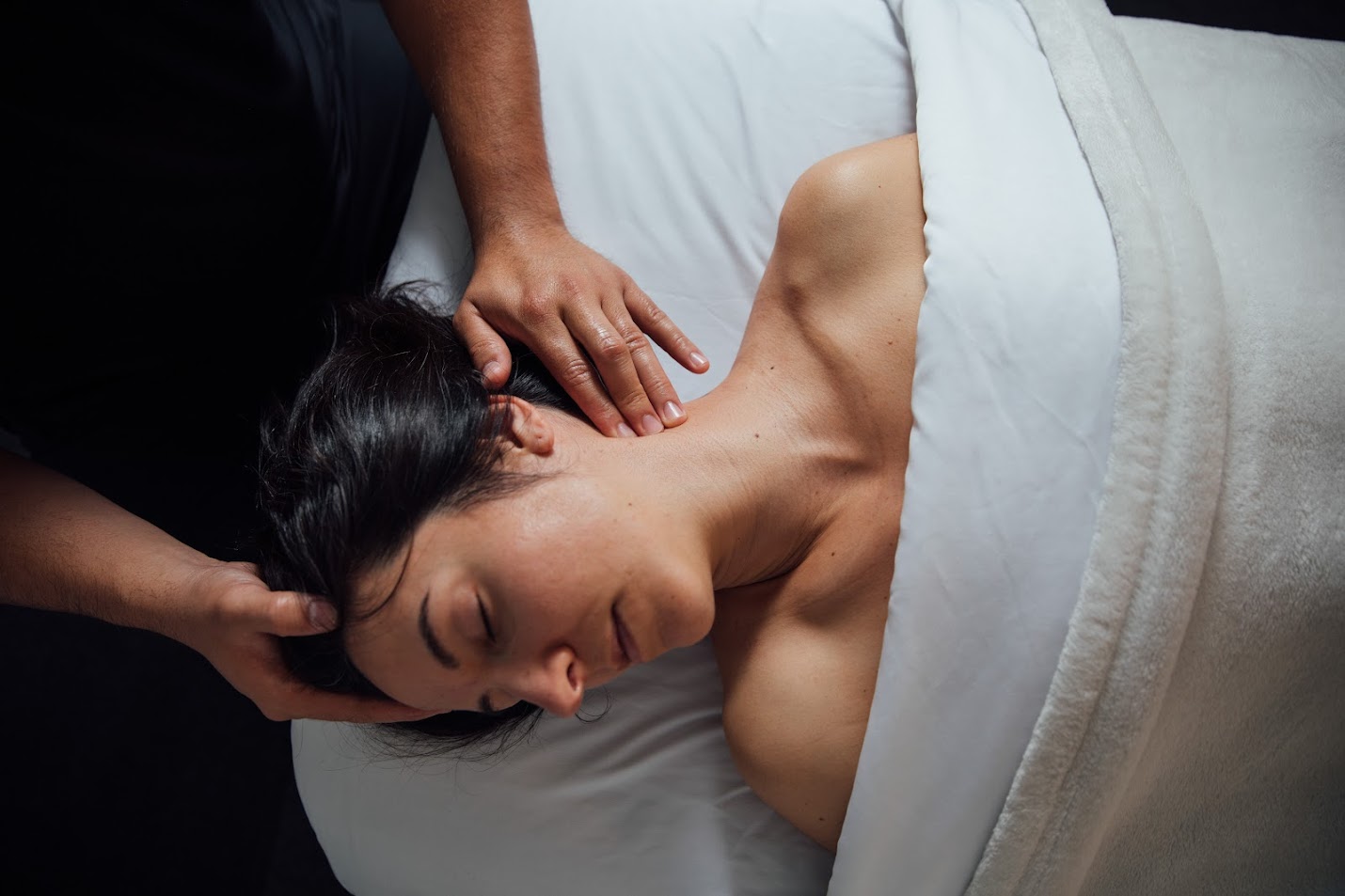Services
Popular Services
POPULAR SERVICES

Dedric's Advanced Neuromuscular Therapy & Structural-Integration
The most advanced bodywork we offer- dynamic interactive bodywork where client is actively involved in many of the techniques. Is a FULL BODY treatment. Designed to provide profound structural change and tissue release. Restore structural misalignments that are attributed to pain, restrictions and tissue dysfunction. From superficial fascia to very deep structural work. We will discuss and demonstrate key exercises and stretches that will help implement these functional sessions into your daily life

Neuromuscular Therapy
Neuromuscular Therapy requires a specialized Certification. Most massage therapists are not trained to this advanced level of kinesiology understanding. A massage modality that targets the nervous system to reduce muscle spasms, increase range of motion, improve range of motion and performance. Several techniques are involved in this discipline from Swedish, deep tissue, trigger point therapy and stretching to aid in resolving chronic and acute musculoskeletal concerns.

Focus: Specific injury or chronic issue focus
Specific injury, nagging ache and pain? The Focus Session is designed to address a specific issue or complaint. NOT necessarily a full body treatment but more so specific connective tissue approach, that may or may not include a full body massage. Depends on the situation. An assessment will help determine the appropriate treatment approach. Structural balancing may be incorporated. Add-on cupping to enhance the outcome. Lengthen your session for more detailed work or multiple issues

Manual Lymphatic Drainage
Lymph drainage facilitates the movement of lymph fluid throughout the entire lymphatic system. Lymphatic drainage after liposuction, post surgery. post injury, pregnancy, diabetes or to assist in removal of toxins from your body. Acute injuries like a sprained ankle or swollen knees or ankles.

Deeply Relaxing

Pediatric massage
Pediatric/children massage. Requires accompanying patents. Parents deal with a wide ranging issues that pediatric massage will help improve. Joint dysplasia, multiple sclerosis, ADHD, cancer among others are common conditions we see at Empirical Knead

Cupping

Reflexology

Thai Massage
Dedric’s Thai massage is a full body stretching session using ancient stretching and modern neuromuscular techniques to leave you feeling free and relaxed. Helps restore length to tight tissue and balance structural imbalances

Prenatal Massage

Reiki
Reiki is an ancient Japanese energy balancing technique that uses a technique commonly called palm or hands on healing. Through the use of this technique, practitioners transfer universal energy (i.e., reiki) in the form of qi (Japanese: ki) through the palms, which they believe allows for self-healing and a state of equilibrium. Reiki is profoundly relaxing and offers innate healing.
Features
What's the Difference?
Structural Integration &
Neuromusclar Therapy
Neuromuscular Therapy (NMT) is a specialized form of manual therapy that focuses on the assessment and treatment of soft tissue pain and dysfunction. It combines principles of anatomy, physiology, and biomechanics to address the relationship between the nervous system and the muscular system.
The therapy targets specific issues such as muscle spasms, trigger points(acute painful spasms), postural imbalances, and chronic pain by applying precise pressure and manipulation techniques to relieve tension, improve circulation, reduce muscle spasms and pain and restore balance.
NMT is commonly used to treat conditions such as:
• Chronic pain (e.g., low back pain, neck pain)
• Sciatica
• TMJ dysfunction
• Sports injuries
• Postural and movement dysfunctions
The goal of neuromuscular therapy is to improve overall function, reduce pain, and enhance physical well-being.
_______________________
Myofascial Structural Integration(MSI) is a therapeutic approach that focuses on aligning and balancing the body’s structure by addressing the myofascial system—an interconnected network of muscles and fascia (connective tissue). Integrating several bodywork modalities. Including NMT, Swedish, Deep Tissue
Key Features of MSI:
• Fascia Focus: MSI emphasizes releasing restrictions and adhesions in the fascia to improve movement, posture, and structural alignment.
• Myofascial Meridians: The technique targets specific “lines” or pathways in the body that connect muscles and fascia, addressing patterns of tension and imbalance across these interconnected systems.
• Holistic Approach: Rather than focusing on isolated symptoms, MSI views the body as an integrated whole, aiming to restore balance and ease across the entire structure.
Goals of MSI:
1. Improve posture and alignment.
2. Reduce chronic pain and tension.
3. Enhance range of motion and flexibility.
4. Promote overall physical and functional balance.
The process typically involves a series of sessions, each addressing specific areas of the body, and is tailored to the individual’s unique patterns of movement, tension, and posture.

Science Informed Massage
Returning quality back to life

Experienced

Certified

Effective

Highly Rated











Our Best Packages
Lorem ipsum dolor sit amet,saed do eiusmod tempor incididunt ut labore et.
